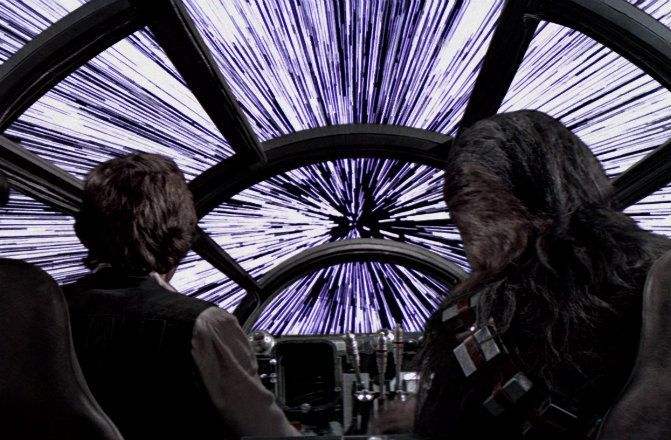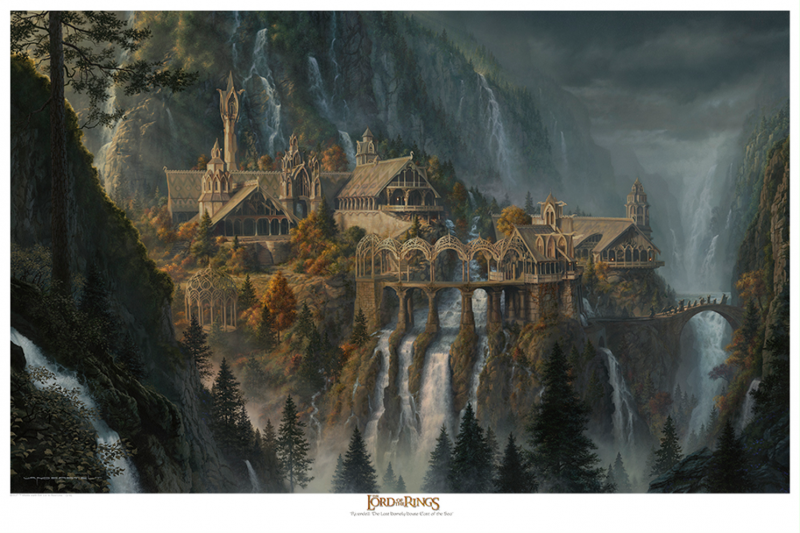Our generation has gotten quite familiar with escapism during our lives for many, many different reasons. We’ve adapted to new political environments as well as changes in the physical environment over the years, and we’re the most aware of dangers and cruelties in the world than any previous generation has ever been. We all know news stories and historical events can unfold very quickly and sometimes all at once. And while I don’t mean to bring the mood down, it’s just a fact that we’ve all been through a lot collectively over the years. It makes sense for us to want to escape from the real world occasionally.
I think it’s safe to say that our phones have become the perfectly curated little world we can escape into whenever we feel like it. We all use social media, and especially TikTok to get away. But whether it be social media, books, movies, TV shows, or video games, we have found a home away from home inside these channels of media.
One genre that welcomes and promotes the act and idea of escapism is the science fiction and fantasy genres. Both have their own tropes and structures, yet we can see how they might interact and overlap. Inside that overlap is where we find ourselves intrigued with a new world unlike ours but familiar to us in nature. Here we can find captivating world-building, including its own religions and politics, magic systems, new species, and unforgettable characters.


The general definition of science fiction as a genre states the world is typically built on what we already know about the science and reality of our own world. To delve deeper into what encapsulates the genre we need to know the difference between hard science fiction and soft science fiction. Examples of “soft science fiction” (also called science fantasy) would include the Star Trek and Star Wars franchises. While their subject matter is undeniably science-based, the rules are not concrete or they stay unexplored for the purposes of introducing more fantasy-like elements, like the hyperspace jump (traveling faster than the speed of light) in Star Wars and “Q” in the Star Trek franchise. Compared to The Martian written by Andy Weir, is a prime example of a hard science fiction story that has the logistics of space exploration at its core.
The soft science fiction genre was introduced to provide some leeway to writers who were frustrated with the rules that hard science fiction pushed them to obey. Because this line was drawn, some take sides saying hard science fiction is the “smart man’s” choice compared to soft sci-fi, as it involves the hard scientific theories and laws at the core of its plot.
Some of the subgenres that fall into both hard and soft sci-fi include fantasy, supernatural, utopian and dystopian fiction, space operas, space westerns, cyberpunk, and steampunk. These stories might deal with ideas of time travel, teleportation, space travel and exploration, and alien or AI life. These stories also tend to interweave philosophical and ethical discussions into their plot or world-building. I’m more of a soft sci-fi fan, I enjoy media that includes the more fantastical elements like in Stranger Things and what a lot of the newer Marvel projects have to offer.


The general definition for the fantasy genre states the world is typically set in a fictional universe involving magical elements that can be inspired by mythology and folklore. The biggest difference between the Sci-fi and fantasy genre is the idea that one is set in a world much like our own and one that takes us out of our world to place us in a new and reimagined one. The fantasy genre includes its own subgenres including high/epic fantasy, low fantasy, magical realism, sword vs. sorcery, dark fantasy, fables, fairy tales, and superhero fiction.
One of my favorite high fantasy books is The Priory of the Orange Tree by Samantha Shannon. Perfectly encapsulating the high fantasy genre, Priory includes the narrative themes that construct the fantasy genre: good vs. evil, the heroic quest for power or knowledge, tradition vs. change, individual vs. society, man vs. nature, man vs. himself, coming of age, love, betrayal, an epic journey, and an unlikely or reluctant hero. This 850-page brick of a book transports you to another world in which there are fights over religion and politics that must be put aside to save the world from destruction. I’ve never read anything so transportive, from the description and distinction of costumes and differing societies to the world’s history and folklore to the dragons and wyrms that are painted in your head! Even with all these narrative themes stacked on top of one another, the book doesn’t feel stereotypical or predictable, it’s complex and multifaceted and keeps you inside the world while reading. Though it took me a couple of months to get through I would take that time to re-read it because of how rich the world and characters were.
I think the most important element that is present in each of these categories is the characters themselves. You can have the most transportive world built, but if your characters are one-dimensional, we won’t want to spend time in that world. When I think about some of the most influential and important stories being told in this genre most credit is given to the characters. Whether it be their personalities, goals or ambitions, flaws, or backgrounds, people want a character that feels like them. We want to see ourselves in these stories. We want to be holding the sword, we want to be wielding the magic, and exploring the galaxy.
For example, Into the Spider-verse is one of my favorite animated superhero films. This movie was amazing for a lot of different reasons, from its animation style to the story itself but it all comes back to the character, to Miles as an Afro-Latino superhero. The story wasn’t centered around his ethnicity, or the discrimination faced because of his ethnicity. It was a story centered around a scared kid from Brooklyn overcoming his fears and taking a leap of faith in himself. Not only can just about anyone relate to finding that inner strength to become a stronger version of themselves but the biracial Black and Brown kids (and adults) could see themselves and their families represented in a mainstream blockbuster movie in a positive way.
Characters must represent their audience for us to truly escape into these fictional worlds. It’s often said but I’ll say it here, representation matters. In all aspects from disabilities to race to sexuality. It’s important that there are more stories representing different groups of people that have been underrepresented or misrepresented in the fantasy and sci-fi genres, but also in media in general. This representation mixed with the common character archetypes and tropes we see inside these genres can create some of the most compelling stories ever told.
The “Chosen One” trope is common, and I think the most popular among audiences. Titles like The Matrix, Legend of Zelda, and Percy Jackson all use the “chosen one” trope to describe the protagonist’s main mission or character arc. Most of these characters have what is called a “fatal flaw,” which is what draws a lot of us to these characters to begin with. This fatal flaw is what is keeping the hero from succeeding. It could be anything ranging from curiosity like Little Red Riding Hood to protecting the ones you love like Katniss Everdeen. These flaws are what make the character more human or real to us. Likewise, it’s also what makes us see ourselves in these characters and allows us to see ourselves as the hero.
On the opposite end of that, we have villains who are like us maybe more than we’d like or exactly how we’d like. One of my favorite tropes for villains is the Female Rage trope. And while I could write an entire article on just that trope alone and about why the characters in this trope even fall under the category of “villain,” I’ll save it for another time and leave you with this:

Female Rage in media has quickly become my favorite trope for women. While women have taken back seats or whose only role was to adhere to the Male Gaze, the renaissance of female rage has allowed women to see themselves represented in media as both powerful and lethal in many different spaces and roles. Some of my favorite examples would include Wanda Maximoff, The Handmaiden, Netflix’s Do Revenge, Midsomamar, Last Night in Soho, and Alyce from Malice by Heather Walter. Each of these titles showcases a woman who was wronged getting her sweet, sweet revenge. Most times it’s not pretty and in most cases, someone dies. But the thing about this trope that makes it so gratifying is seeing a woman completely lose herself and sometimes destroy everything in her life because she is angry. That’s some powerful stuff. It goes back to being able to see yourself in these stories and be able to live through them.
Overall, the sci-fi and fantasy genres have a lot to offer in terms of escapism. Some people might find themselves escaping in these various stories by accident and some might go looking for somewhere to escape. Either way, the genres are amazing at what they do and have allowed so many people to find a second home. Even if it is fiction if it feels real enough it’s real to us, and at the end of the day, that’s what the genre aims to do.